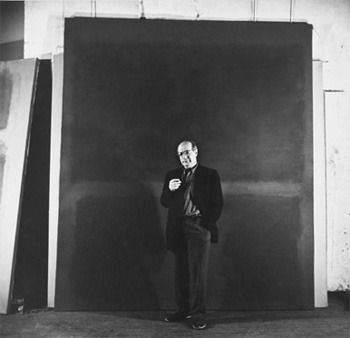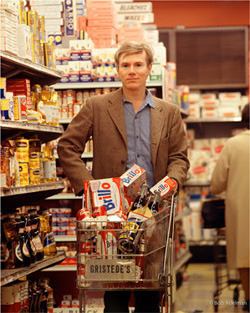A bit miffed that his artistic manifesto had been mistaken for an
IKEA catalog, Klein decided to take monochrome painting to a new level
-- namely, by
inventing a new color. His
International Klein Blue is a unique, brilliantly luminous shade of blue ... which
you'll probably never witness
unless you get to look at a Klein painting in the flesh. See, when
artists' paints are made, the pigment is mixed with some kind of binding
medium, which has a tendency to dull the color (which, in turn, makes
it easier to reproduce in screens or print). Klein wanted a blue that
would never lose its glow, and after much experimentation, he finally
found an art shop which sold a special type of binding material
(Rhodopas M60A) which allowed him to mix the perfect shade. Then some
heathen came along and said, "I don't get it, it's just blue," and
Klein's head exploded in the most luminous shade of red.
1
Ancient Egyptian Drawings Were Constructed Proportionally On A Mathematical Grid
Here's a typical ancient Egyptian portrait:
It's kind of pretty in a stylized and iconic way, but it doesn't seem
all that technically impressive. The ancient Egyptians are known more
as engineers, not artists, which might leave you a bit cold in the
gallery, but at least their college degrees were
worth something, dammit.
But Actually ...
They were both engineers and artists, even bringing the former to the
latter. First, they had to draw up a grid, dividing the work surface
into
parts of equal proportions.
Only then could they start figuring out where to put each body part,
all of which had to take a specific number of squares (presumably to
prevent the occurrence of Rob Liefeld feet). Different kinds of figures
were to be specific sizes -- a standing figure, for example,
always had to occupy 18 squares from the feet to those sexy lined eyes.
 John Legon
Those 17 squares tall were subject to intense body-shaming.
John Legon
Those 17 squares tall were subject to intense body-shaming.
Just for laughs, the grids were usually changed around when a new
dynasty came to the throne, but they were always highly specific. Under
the rule of the Twelfth Dynasty, every single body part had its assigned
place, from the hairline to the line of the lower buttock (the two were
to be nine squares apart in a seated figure, as the gods intended).
There was even a specific line that
had to run through the nipple, marking the invention of nipple piercing long before your father was disappointed in you.
 pyramidofman.com
And yes, there's a crotch piercing. You didn't even need to ask.
pyramidofman.com
And yes, there's a crotch piercing. You didn't even need to ask.
There was also a whole other set of rules dictating what percentage
of which body part had to go in which square. As you can see from above,
for instance, during the Sixth Dynasty, an erect dong was to be exactly
4.5 squares long, no matter what the long-haired guy on the right
insisted.







 Albright-Knox Art Gallery
"That's right. My paintings are so big that they only fit on your mom's fridge."
Albright-Knox Art Gallery
"That's right. My paintings are so big that they only fit on your mom's fridge." Bob Adelman
Andy Warhol buying groceries like a "regular male human" is the most intensely creepy thing we've seen.
Bob Adelman
Andy Warhol buying groceries like a "regular male human" is the most intensely creepy thing we've seen.